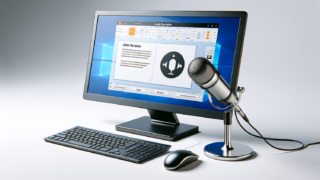
How to Use the Selection Pane in PowerPoint?
Written by: Bill Whitman
Last updated:

How to Use the Selection Pane in PowerPoint
Discover the utility and efficiency of managing your PowerPoint slides with the Selection Pane, a critical tool for any presentation. This feature aids in the organization, manipulation, and visibility management of various elements within a slide. Mastering its use can significantly improve your workflow in Microsoft Office presentations.
Category: PowerPoint Tutorials
Step-by-Step Guide
1. Access the Selection Pane
- Open your PowerPoint presentation and navigate to the slide where you want to organize objects.
- Select the Home tab on the Ribbon, then click on Select followed by Selection Pane on the far right. This action reveals the Selection Pane on the right side of your screen, displaying a list of all the objects on the current slide.
2. Rename Objects for Clarity
- In the Selection Pane, click on any default object name (like “Rectangle 1”) to rename it. This enhances clarity, making it easier to navigate through multiple objects.
- Type a new name that describes the object’s role (e.g., “Company Logo”). Press Enter to save.
3. Reorder and Manage Visibility
- You can change the stacking order of the objects by dragging them up or down in the list. Objects at the top of the list will layer above those below them on the slide.
- To hide an object, click on the eye icon next to its name. Click again to make it visible.
4. Final Adjustments
- After organizing your objects, use the Selection Pane to review and ensure all items are named and ordered properly.
- Make any final adjustments to visibility, ensuring that all necessary objects are visible and unnecessary items are hidden for a clean presentation view.
Pro Tips
- Use Shortcuts: Quickly toggle the Selection Pane by pressing Alt + F10. This can speed up your editing process drastically.
- Group Frequently Used Objects: For easier management, group items that are always moved or formatted together.
- Lock Objects: After finalizing the position of critical objects, consider locking them to avoid accidental movement.
Troubleshooting Common Issues
| Issue | Solution |
|---|---|
| Objects accidentally moving | Ensure objects are locked or hidden in the Selection Pane when not being edited. |
| Visibility toggles not saving | Check for multiple instances of PowerPoint running or restart the application to resolve saving issues. |
Advanced Techniques
- Automate Selection Pane Usage: Use macros to automatically open and set up your Selection Pane with predefined settings, streamlining your workflow.
- Integrate with Master Slides: Use the Selection Pane when editing Master Slides to ensure consistency across multiple slides with similar objects.
Compatibility Notes
- Variations might exist between different versions of PowerPoint, especially older versions (before 2010) which might not support some modern functionalities of the Selection Pane.
- Similar features may exist in other presentation tools like Google Slides or Keynote, but the exact functionality and interface can significantly differ.
Conclusion
By mastering the Selection Pane in PowerPoint, you can enhance the efficiency and precision of your slide creation. With this powerful tool, managing complex presentations becomes an organized and streamlined process. Explore more such features on our trusted site, LearnPowerPoint.io.
FAQ
- Q: How can I quickly select multiple objects?
A: Hold down the Ctrl key and click on each object in the Selection Pane to select multiple objects simultaneously.
- Q: What is the advantage of renaming objects in the Selection Pane?
A: Renaming helps in identifying specific objects quickly, especially in slides with many elements, improving your editing speed and accuracy.
- Q: Can I use the Selection Pane in a collaborative setting?
A: Yes, the Selection Pane can be extremely beneficial in collaborative environments as it ensures that each object can be easily identified and managed by all contributors.
Featured Posts
- No pillar pages found.








